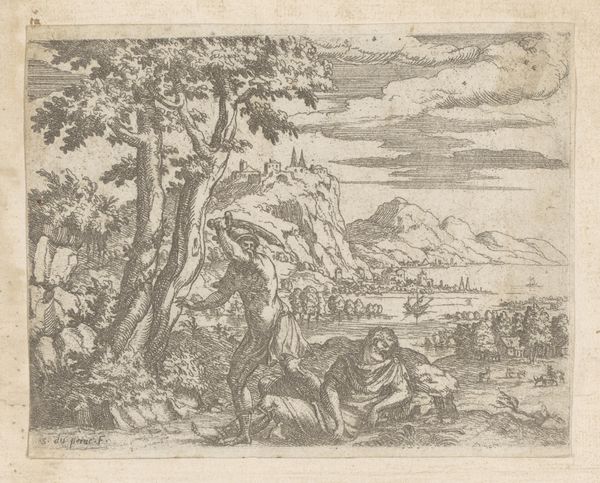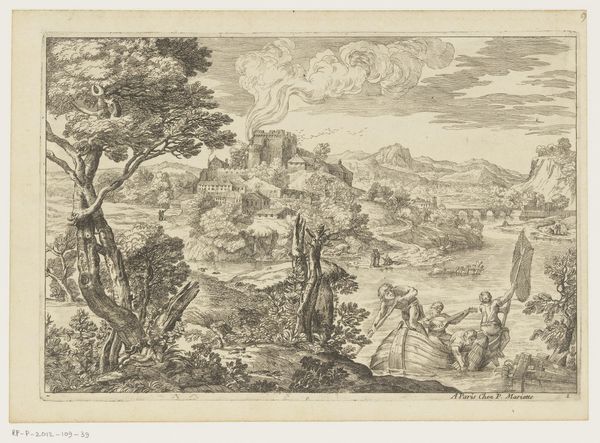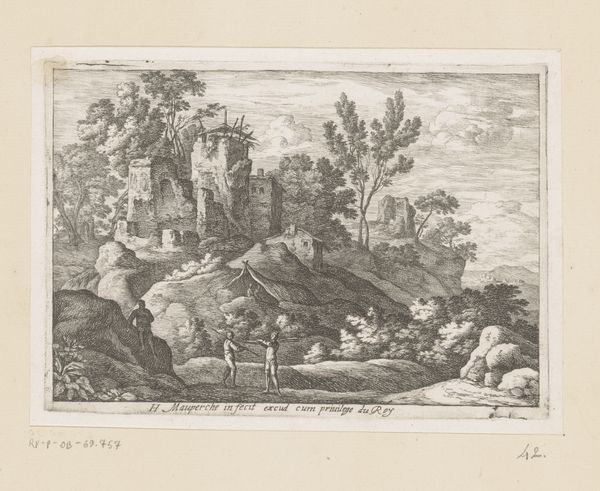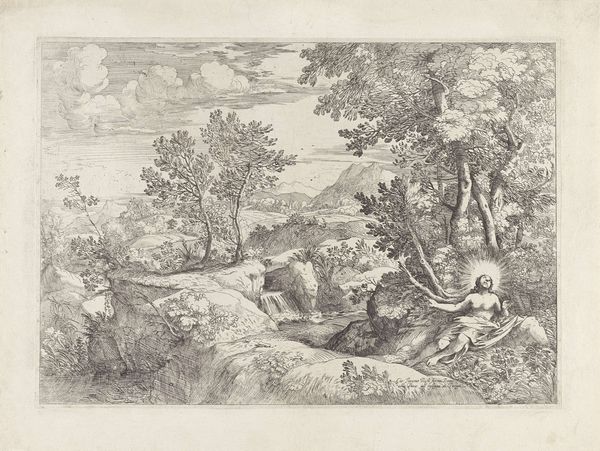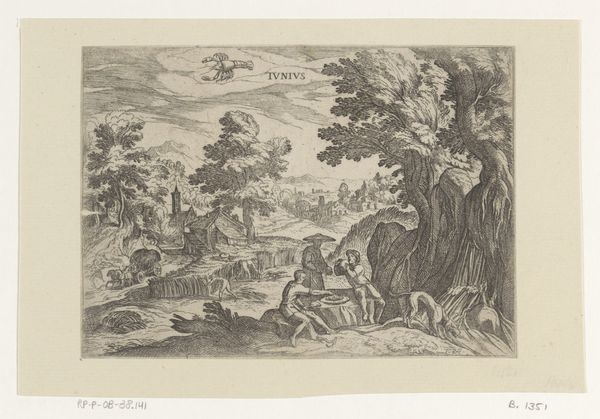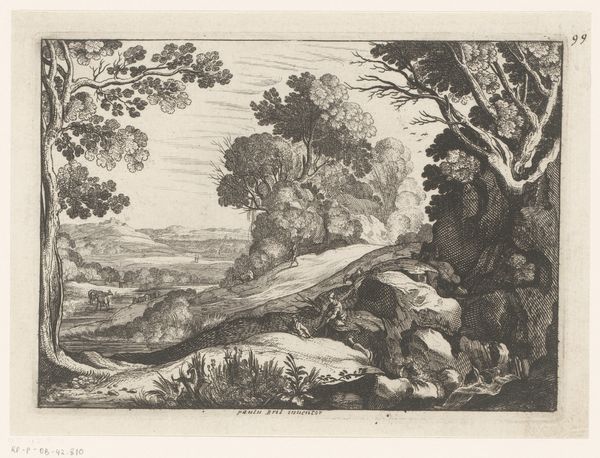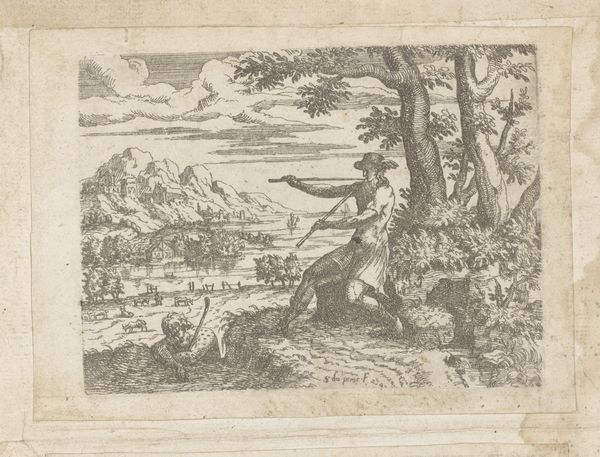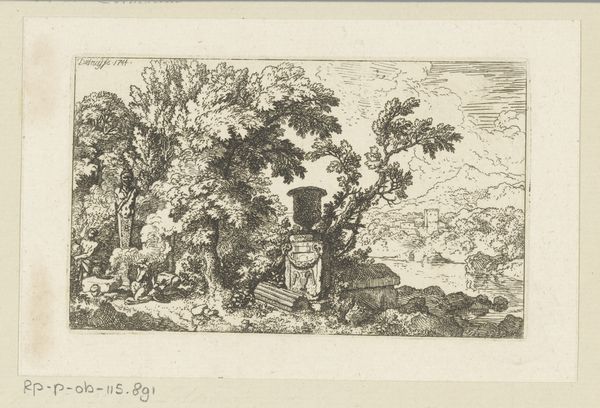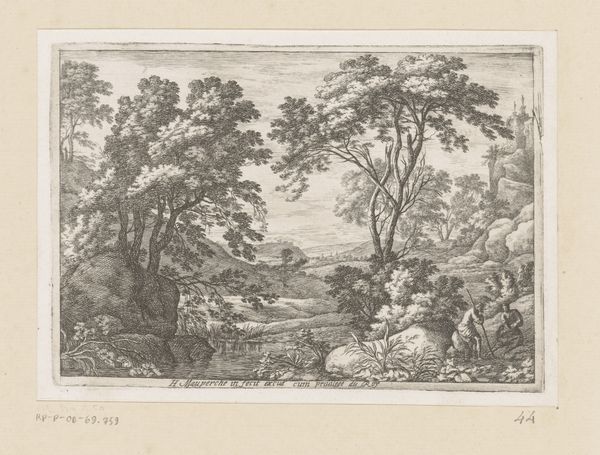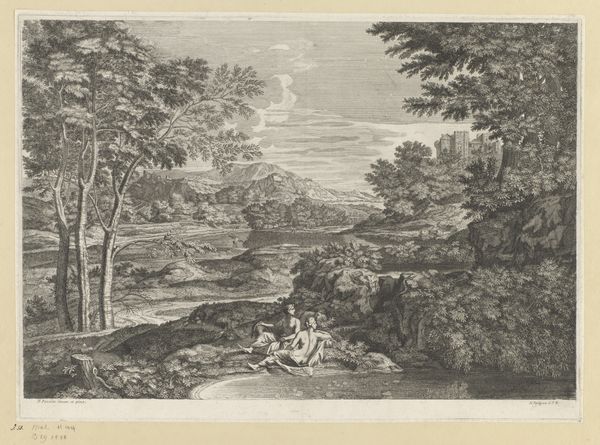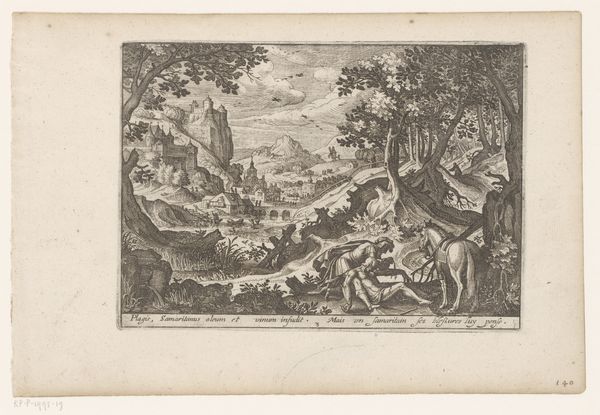
print, engraving
#
baroque
#
ink paper printed
# print
#
pencil sketch
#
old engraving style
#
landscape
#
figuration
#
engraving
Dimensions: height 194 mm, width 270 mm
Copyright: Rijks Museum: Open Domain
Curator: Here we have Henri Mauperché's engraving, "Verloren Zoon die de varkens hoedt," which translates to "The Prodigal Son Among the Swine," created sometime between 1612 and 1686. Editor: It's striking how desolate the scene appears. The lone figure and the coarse animals set against such a dilapidated backdrop of crumbling structures… It speaks volumes about isolation. Curator: Absolutely. The piece's meaning becomes richer when you examine the conditions of its creation. Engravings at the time like this were more than mere decoration, they played a crucial role in disseminating religious stories through easily reproducible images. Editor: Making the narrative accessible to wider, potentially less literate audiences… It prompts a discussion of class and religious education. I see the landscape functioning almost as a character itself, underscoring the son’s abandonment and spiritual destitution through those rough-hewn materials. Curator: I agree. And consider how the means of producing an image also shapes our reading of the narrative; the detailed labor-intensive process of engraving – each line etched by hand – mirrors, in a way, the laboriousness of redemption and repentance at the story’s core. Editor: The etching feels both stark and intricate, reinforcing the contradictions within the narrative. It speaks to questions of guilt, social disgrace and spiritual longing during an era wrestling with the implications of religious reform. What a powerful visual translation of vulnerability! Curator: Indeed, this engraving showcases both the story's enduring relevance and how artists adapted their production methods to influence moral and religious contemplation amongst the public. Editor: Examining how it engages with historical, spiritual and material realities deepens its artistic impact. Curator: Agreed. It reveals the embedded histories and socioeconomic implications within something as seemingly simple as a print.
Comments
No comments
Be the first to comment and join the conversation on the ultimate creative platform.

